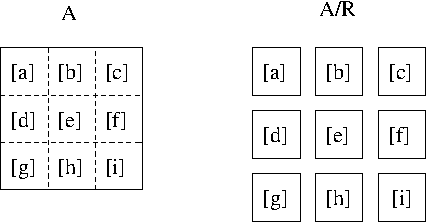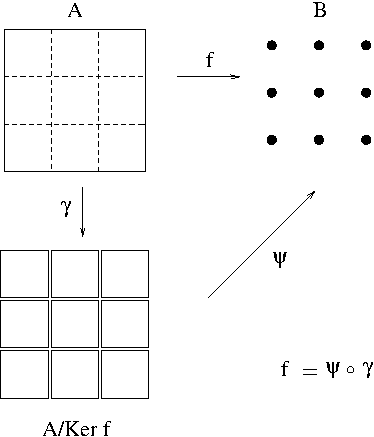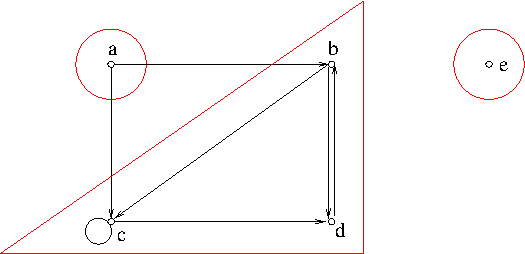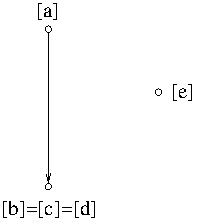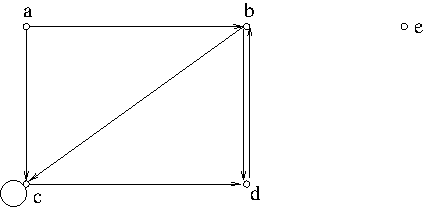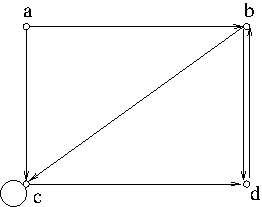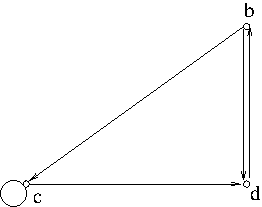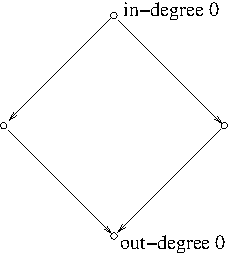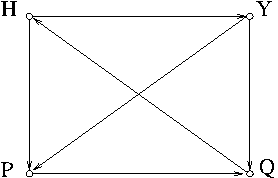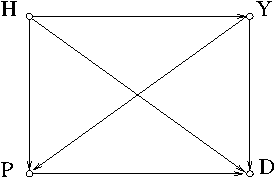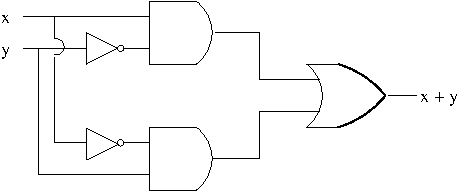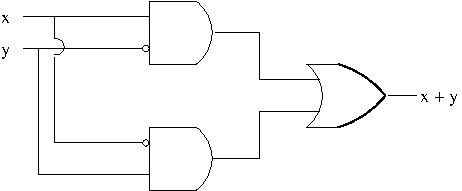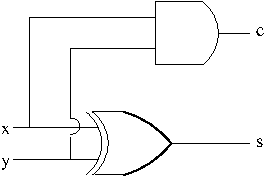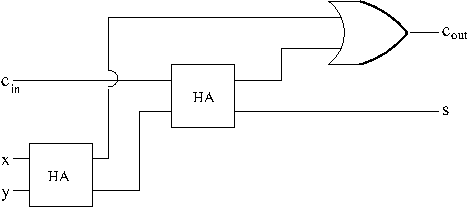Recall the equivalence relation $\equiv\ \mathrm{mod}\ n$ on $\mathbb{Z}$ (we discussed it here) $$p\equiv q\ \mathrm{mod}\ n\ \Longleftrightarrow\ n|(p-q)$$ Let us denote by $p\ \mathrm{mod}\ n$ the remainder when $p$ is divided by $n$. The definition of the equivalence relation implies that $$p\equiv q\ \mathrm{mod}\ n\ \Longleftrightarrow\ p\ \mathrm{mod}\ n=q\ \mathrm{mod}\ n$$ (The proof is left as an exercise.) When an integer $p$ is divided by $n$, the remainder $p\ \mathrm{mod}\ n$ is an integer satisfying the inequality $0\leq p\ \mathrm{mod}\ n\leq n-1$. Therefore, the equivalence class $[p]$ is one of $[0],[1],\cdots,[n-1]$, i.e. the quotient set $\mathbb{Z}_n=\mathbb{Z}/\equiv\mathrm{mod}\ n$ is $$\mathbb{Z}_n=\{[0],[1],[2],\cdots,[n-1]\}$$ Also recall that in here we defined $+$ and $\cdot$ on $\mathbb{Z}_n$ by \begin{align*}[a]+[b]&=[a+b]\\ [a]\cdot[b]&=[a\cdot b]\end{align*} These operations are well-defined due to the following properties (see Problem Set 12 #7): if $a\equiv b\ \mathrm{mod}\ n$ and $c\equiv d\ \mathrm{mod}\ n$, then \begin{equation}\begin{aligned}a+c&\equiv b+d\ \mathrm{mod}\ n\\a\cdot c&\equiv b\cdot d\ \mathrm{mod}\ n\end{aligned}\label{eq:congrel}\end{equation} The following is another useful property: if $a\equiv b\ \mathrm{mod}\ n$ and $c$ is an integer then \begin{equation}\label{eq:congrel2}c\cdot a\equiv c\cdot b\ \mathrm{mod}\ n\end{equation} Its proof is straightforward so it is left as an exercise. The properties \eqref{eq:congrel} and \eqref{eq:congrel2} can be used to calculate the remainder when a significantly large integer is divided by an integer $n$.
Example. What is $N\ \mathrm{mod}\ 21$ where $$N=113\times (167+484)+192\times 145?$$
Solution. $N=113\times (167+484)+192\times 145=101403$, which is not really a large number. One can simply divide 101403 by 21 and find the remainder 15. Let us now try a different way. Note that $113\equiv 8\ \mathrm{mod}\ 21$, $167\equiv 20\ \mathrm{mod}\ 21$, $484\equiv\ 1\mathrm{mod}\ 21$, $192\equiv 3\ \mathrm{mod}\ 21$, and $145\equiv 19\ \mathrm{mod}\ 21$. Hence by using \eqref{eq:congrel} we have $$N\equiv 8\times (20+1)+3\times 19=225\ \mathrm{mod}\ 21$$ 225 is a much smaller number and one can easily divide it by 21 and obtain the remainder 15. On the other hand, $21\equiv 0\ \mathrm{mod}\ 21$ and $19\equiv -2\ \mathrm{mod}\ 21$ since $19=21-2$. So by using the properties \eqref{eq:congrel} and \eqref{eq:congrel2}, we have $$N\equiv 8\times 0+3\times (-2)=-6\equiv 15\ \mathrm{mod}\ 21$$ since $-6=21(-1)+15$.
Example. What is $10^3\ \mathrm{mod}\ 7$?
Solution. $1000$ is not a large number and one can easily divide it by 7 to obtain $1000=142\cdot 7+6$ and so $10^3\equiv 6\ \mathrm{mod}\ 7$. There is a smarter way to do this though. Note that $10=7\cdot 1+3$, so $10\equiv 3\ \mathrm{mod}\ 7$. Using \eqref{eq:congrel}, we obtain $$10^3\equiv 3\cdot 3\cdot 3=27\equiv 6\ \mathrm{mod}\ 7$$
The remainder when a large number is divided by an integer sometimes can be calculated using repeated squaring as seen in the following example.
Example. Find $3^{25}\ \mathrm{mod}\ 7$.
Solution. \begin{align*}3^{25}&=(3^{12})^2\cdot 3\\&=((3^6)^2)^2\cdot 3\\&=(((3^3)^2)^2)^2\cdot 3\\&=(((3^2\cdot 3)^2)^2)^2\cdot 3\\&\equiv (((2\cdot 3)^2)^2)^2\cdot 3\\&=((36)^2)^2\cdot 3\\&\equiv 3\ \mathrm{mod}\ 7\end{align*} where we use the fact $36\equiv 1\ \mathrm{mod}\ 7$.
Definition. $[y]$ is said to be a multiplicative inverse of $[x]$ in $\mathbb{Z}_n$ if $x\cdot y\equiv 1\ \mathrm{mod}\ n$.
It is not necessarily that every non-zero element of $\mathbb{Z}_n$ has a multiplicative inverse. For example, let us consider the multiplication table of $\mathbb{Z}_4$. Here, we denoted $[a]$ by simply $a$. $$\begin{array}{|c|c|c|c|c|}\hline\cdot & 0 & 1 & 2 & 3\\\hline 0 & 0 & 0 & 0 &0\\\hline1 & 0 & 1 & 2 & 3\\\hline2 & 0 & 2 & 1 & 2\\\hline3 & 0 &3 & 0 &3\\\hline\end{array}$$ As clearly seen in the table, 3 does not have a multiplicative inverse. On the other hand, in $\mathbb{Z}_5$ all non-zero elements have multiplicative inverses as shown in the following table. $$\begin{array}{|c|c|c|c|c|c|}\hline\cdot & 0 & 1 & 2 & 3 & 4\\\hline 0 & 0 & 0 & 0 & 0 & 0\\\hline 1 & 0 & 1 & 2 & 3 & 4\\\hline 2 & 0 & 2 & 4 & 1 & 3\\\hline 3 & 0 &3 & 1 & 4 & 2\\\hline 4 & 0 & 4 & 3 & 2 & 1\\\hline\end{array}$$ Notice that 5 is a prime number. In fact, we have the following cool theorem.
Theorem. If $p$ is prime, then every non-zero element of $\mathbb{Z}_p$ has a multiplicative inverse. Therefore, $\mathbb{Z}_p$ is a finite field.
Proof. Let $a$ be an integer such that $1\leq a\leq p-1$. Then clearly $$\mathbb{Z}_p[a]=\{[0],[1\cdot a],\cdots,[(p-1)\cdot a]\}\subseteq\mathbb{Z}_p$$ If $[0],[1\cdot a],\cdots,[(p-1)\cdot a]$ are mutually distinct, $\mathbb{Z}_p[a]=\mathbb{Z}$ and therefore, $[i]\cdot[a]=[i\cdot a]=1$ for some $1\leq i\leq p-1$. That is, $[a]$ has a multiplicative inverse. So the proof of this theorem boils down to showing that $\mathbb{Z}_p[a]$ has $p$ distinct elements for any $1\leq a\leq p-1$. This is a consequence of the lemma below.
Lemma. If $p$ is a prime number such that $p\not| a$ and $i\cdot a\equiv j\cdot a\ \mathrm{mod}\ p$ then $i\equiv j\ \mathrm{mod}\ p$.
Proof. If $i\cdot a\equiv j\cdot a\ \mathrm{mod}\ p$ then $p|a(i-j)$. Since $p\not| a$, $p|i-j$ i.e. $i\equiv j\ \mathrm{mod}\ p$.
References.
[1] Essential Discrete Mathematics for Computer Science, Harry Lewis and Rachel Zax, Princeton University Press, 2019
[2] A Short Course in Discrete Mathematics, Edward A. Bender and S. Gil Williamson, Dover Publications, 2012

